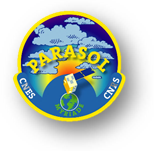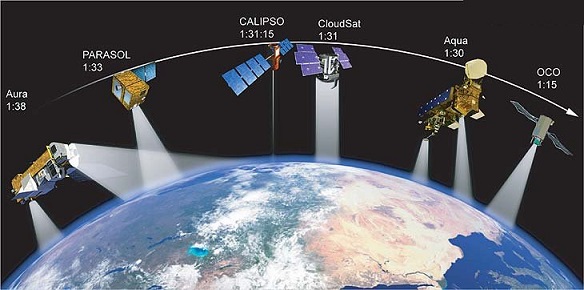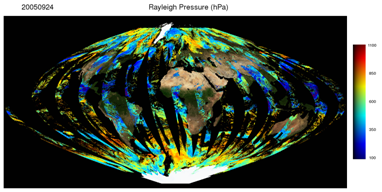 |
  |
Archive CNES des données POLDER
The PARASOL (Polarization and Anisotropy of Reflectances for Atmospheric science coupled with Observations from a Lidar) mission defined in 1999 intends to characterize the radiative properties of clouds and aerosols by taking advantage of its complementarity with the other instruments in the A-Train formation, which include the CERES and MODIS radiometers onboard the Aqua satellite, a lidar onboard Calipso and a radar onboard Cloudsat.
The PARASOL payload draws extensively on instruments developed for the POLDER program, while the spacecraft bus benefits from previous developments on Demeter, the first one of CNES's Myriade line of microsatellites. The resulting reduction in costs and lead times allowed CNES to develop and build the satellite in less than three years.
CNES (Centre National d'Etudes Spatiales) is responsible for the bus, payload command control and ground segments, while the LOA (Atmospheric Optics Laboratory) in Lille, leads the science mission. LOA heads a science working group of researchers from laboratories affiliated to CNRS, the French National Scientific Research Centre: the LMD (Dynamic Meteorology Researc Laboratory), the LSCE (Climate an environmental Science Laboratory) and the SA (Aeronomy Research Laboratory).
The ICARE Data and Services Center (Lille) is in charge of the POLDER/PARASOL level-2 and level-3 production and distribution of derived atmospheric products. Level-1 data is distributed by CNES.
The synergy between Aqua, CALIPSO, Cloudsat and PARASOL within the A-Train imposed a number of constraints onto the PARASOL mission. The local equator-crossing time has to be carefully adjusted with respect to Aqua (around 1:30 pm) and CALIPSO, which trails Aqua to the east by nine minutes. Furthermore, the launch trajectory had to be orchestrated by CNES operations team as part of an ultra-precise orbital choregraphy to position PARASOL accurately in the constellation. Parasol was launched on December 18th 2004.
 A-Train constellation |
Scientific objectives
The PARASOL mission aims at measuring polarization and directionality of reflectances in coincidence with observations from the lidar onboard CALIPSO. Solar radiation becomes polarized when scattered by certain particles such as aerosols, water droplets or ice crystals. Parasol measures light polarized in different directions to characterize clouds and aerosols more accurately than traditional methods that only rely on their spectral signature.
Data collected by PARASOL allow scientists to determine the quantity and size distribution of aerosols over oceans, their turbidity index over land surfaces, and evaluate their influence on solar radiation. PARASOL also helps detect clouds, determine their thermodynamic phase, altitude, optical thickness, and estimated reflected solar flux. Integrated water vapor content is estimated too.
 |
POLDER/PARASOL External Links: PARASOL
